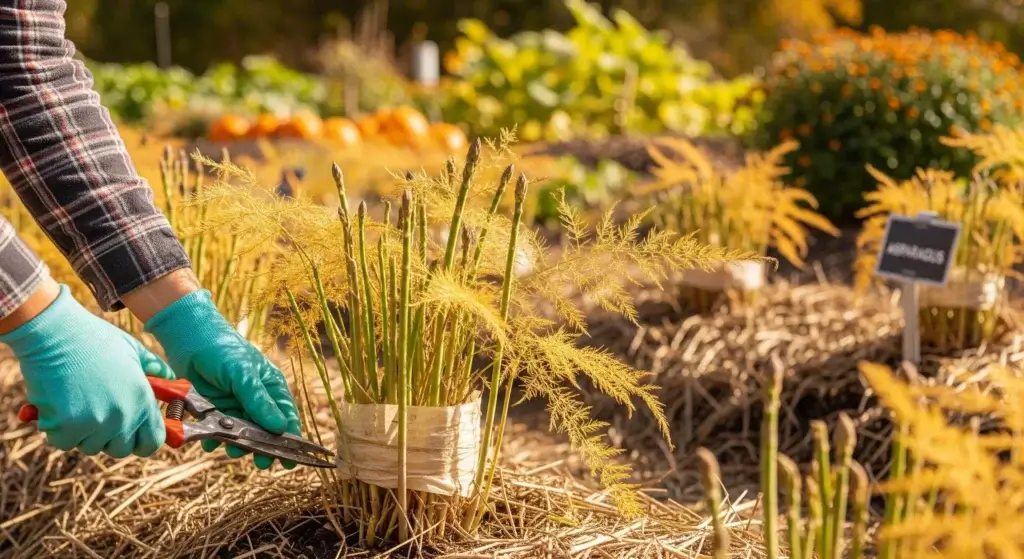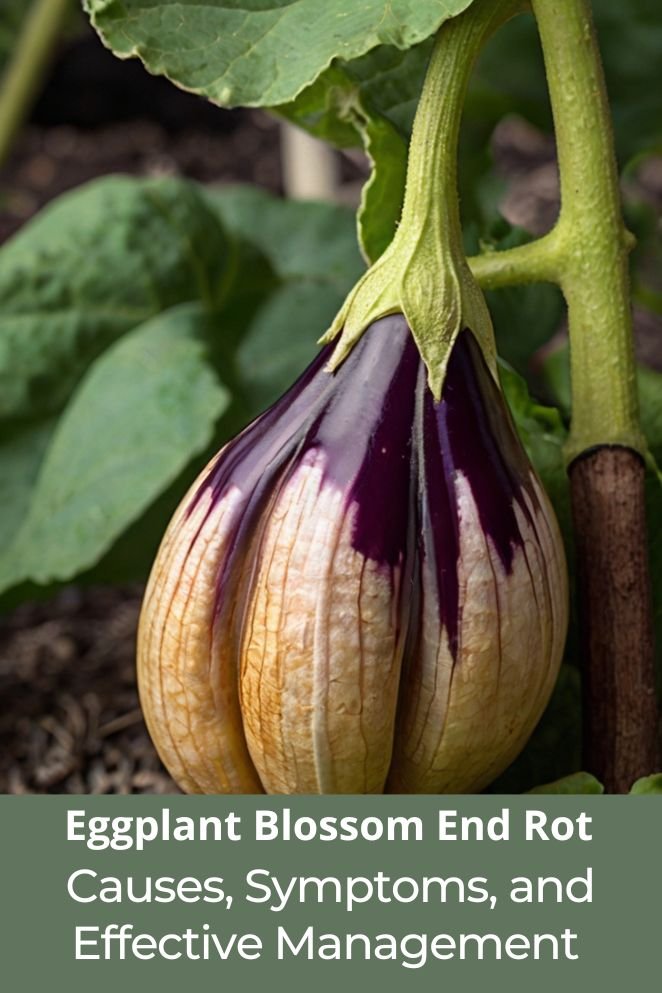
Eggplants are a beloved vegetable in gardens and kitchens alike.
Their rich flavor and versatility make them a favorite for many.
But one common problem that can cause frustration for gardeners is eggplant blossom end rot.
This issue can ruin your crop if not addressed, but the good news is that with a little understanding and care, you can prevent and manage it effectively.
Blossom end rot is a common problem in many fruit-bearing plants like tomatoes, peppers, and yes, eggplants.
It often shows up as dark, sunken spots at the blossom end of the fruit, causing it to rot.
This condition can be heartbreaking for gardeners after putting in so much effort to grow healthy plants.
What is Eggplant Blossom End Rot
Eggplant blossom end rot (BER) is a physiological disorder that affects the fruit of the plant, specifically at the blossom end—the bottom part of the fruit where the flower was attached.
Contrary to what some might think, this is not caused by a disease or pests but by environmental and nutritional factors.
The condition starts with a small, water-soaked spot that gradually grows larger and darker.
Over time, this spot becomes leathery and sunken, leading to the eventual rotting of the fruit.
This can be incredibly frustrating for gardeners who have invested time and energy into their plants.
While blossom end rot can make your eggplants unsightly and inedible, it is not contagious and can be prevented with proper care.
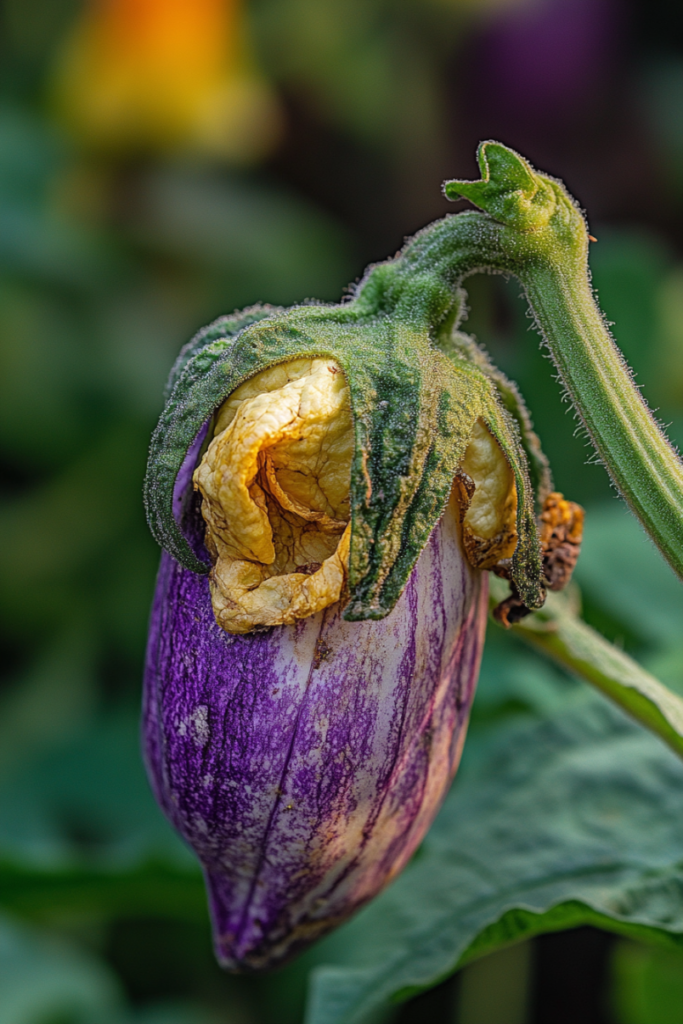
- Read also: Save Your Tomatoes: Tips on Blossom End Rot in Tomatoes
- Read also: Pepper Apocalypse? Prevent and Fix Blossom End Rot in Peppers
Symptoms of Eggplant BER
Recognizing the symptoms of blossom end rot early can help you take action before it spreads to more fruits.
Here are some signs to look out for:
- Initial water-soaked area: The first sign of blossom end rot is usually a small, water-soaked area at the blossom end (the bottom) of the eggplant. This area may appear slightly bruised or discolored.
- Development of lesions: As the condition progresses, this initial spot enlarges and develops into a dark, sunken lesion. The affected area may become black and leathery to the touch.
- Extent of damage: In severe cases, the lesion can cover a significant portion of the bottom half of the fruit, leading to extensive tissue breakdown. The affected area can also become a site for secondary infections by bacteria or fungi.
- Fruit quality: While the exterior may look damaged, sometimes the interior of the fruit remains sound initially. However, as the rot progresses, it can lead to internal discoloration and decay, affecting overall fruit quality.
- Occurrence timing: Blossom end rot typically affects the first fruits produced by the plant and can occur at any stage of growth, from green to ripe fruit.
It’s important to note that blossom end rot doesn’t affect all the fruits on a plant at once.
You might notice it on just a few eggplants, but if left unchecked, it can become more widespread.
Causes of Eggplant BER
Understanding the root cause of blossom end rot is key to preventing it from affecting your crop.
Despite how it looks, the problem isn’t caused by pests or diseases but by a lack of calcium in the developing fruit.
Calcium is essential for proper cell structure and development, and when a plant can’t get enough calcium to the fruit, blossom end rot occurs.
Several factors contribute to this deficiency:
- Watering issues: Inconsistent watering is one of the biggest culprits. If the soil is too dry or too wet, the plant may struggle to absorb calcium. Water plays a crucial role in transporting calcium from the soil to the fruit.
- Fluctuating soil moisture: Rapid changes in soil moisture, such as a period of drought followed by heavy watering, can also lead to calcium uptake issues.
- Extreme soil pH: Soil pH levels too acidic or too alkaline can interfere with calcium absorption.
- Excess nitrogen: Too much nitrogen in the soil can encourage rapid plant growth, which can interfere with calcium absorption. The plant focuses on growing leaves and stems rather than developing healthy fruits.
- High soil salinity: Excess salts in the soil can reduce the plant’s ability to take in calcium, leading to blossom end rot.
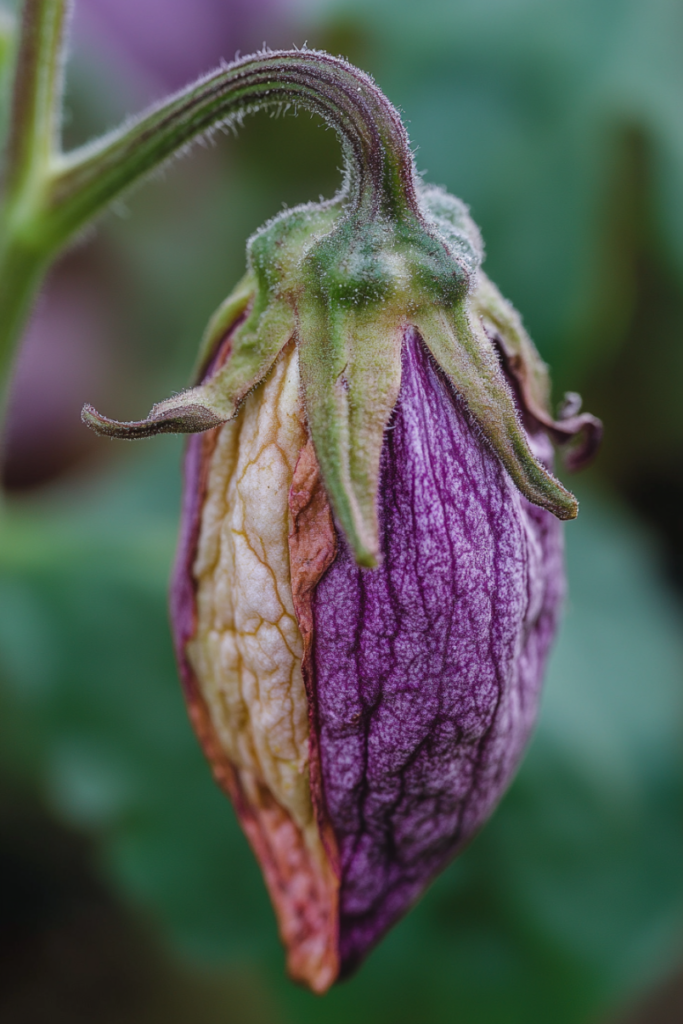
Controlling of Eggplant BER
While eggplant blossom end rot can be disheartening, it’s not the end of the road for your garden.
By addressing the underlying causes, you can prevent future occurrences and save your crop. Here’s how:
- Consistent watering: One of the most effective ways to prevent blossom end rot is to ensure your plants receive consistent moisture. Avoid letting the soil dry out completely, but also avoid overwatering, as waterlogged roots can prevent calcium uptake. A good rule of thumb is to water deeply once or twice a week, depending on the weather.
- Mulching: Applying a layer of organic mulch around the base of your plants helps retain soil moisture and keeps the roots cool. Mulch also prevents rapid evaporation, ensuring the plant has access to consistent moisture.
- Calcium-rich fertilizer: If your soil lacks calcium, consider adding a calcium-rich fertilizer. You can also use garden lime or gypsum to increase the calcium levels in the soil. Be cautious not to overdo it, as too much calcium can lead to other issues.
- Proper soil testing: Before planting, it’s a good idea to test your soil to determine its nutrient content. A simple soil test can reveal whether your soil is deficient in calcium or has other nutrient imbalances.
- Avoid excess nitrogen: While nitrogen is important for plant growth, too much can lead to rapid vegetative growth at the expense of fruit development. Use a balanced fertilizer and avoid high-nitrogen fertilizers during the fruiting stage.
- Watering consistency: Invest in a drip irrigation system to maintain consistent moisture levels in the soil. Drip irrigation provides a slow, steady supply of water directly to the plant’s roots, reducing the risk of both underwatering and overwatering.
- Epsom salt foliar spray: Some gardeners find success using an Epsom salt spray to provide magnesium and aid calcium uptake. Mix one tablespoon of Epsom salt with a gallon of water and spray it on the plant’s leaves once a week.
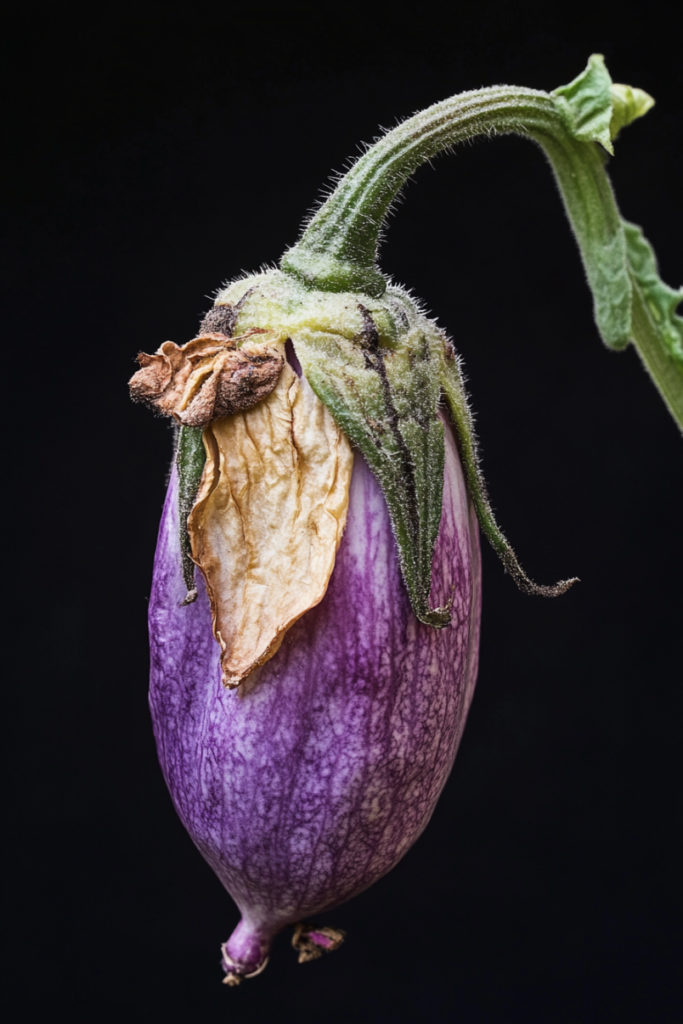
- Read also: Organic Eggplant Care: Growing Healthy, Chemical-Free Eggplants
- Read also: Eggplant Yellow Leaves: How to Diagnose and Fix the Problem
Conclusion
Eggplant blossom end rot can be a frustrating issue for gardeners, but with proper care and attention, it’s entirely manageable.
By understanding the symptoms, causes, and management techniques, you can protect your eggplants from this common disorder and enjoy a healthy, bountiful harvest.
Remember, consistency is key.
Whether it’s watering, soil health, or nutrient levels, keeping everything balanced will help your plants thrive.
If you catch blossom end rot early and take action, you can prevent it from affecting future fruits.

